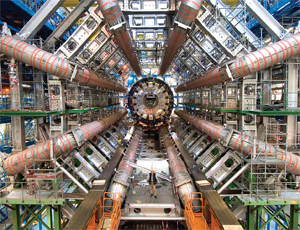Size does matter for construction folks who, by nature, like telling tall tales about how their project is the world’s tallest, longest or deepest. But the wildest reason ever given for a project malfunctioning has to be that offered for the shower of sparks and released cloud of super-cold helium when the Large Hadron Collider (LHC) was switched on last year in Switzerland: Some physicists believed a theoretical subatomic-particle called the Higgs boson (also known as the God particle), which scientists hope to create with the collider, would be so catastrophic to nature that its effects would ripple back in time and stop the machine before it could produce one. On the positive side, physicists hope the particle will explain why matter has mass. Higgs boson is the last particle in the Standard Model of physics that has not been observed.

Rather than time travel, the actual cause of the shutdown on Sept. 10, 2008, was a short circuit between two of the 9,300 large superconducting magnets within hours of operation. The force of the malfunction ripped them from their mountings and caused the loss of about one tonne of liquid helium. The magnets are cooled to minus 271.3° C, or 2° C above absolute zero, which is colder than interstellar space.
The project at CERN—the European Organization for Nuclear Research near Geneva—has tall objectives. The collider will send two beams of subatomic particles, called hadrons, in opposite directions in a 27-km ring-like tunnel 100 m below ground. It will attempt to recreate conditions within nanoseconds after the “Big Bang” that astrophysicists say created the universe. They hope the experiment will lead to new knowledge of the workings of physics. The particles will travel at 99.99% of the speed of light and collide 600 million times per second at four points, at which instruments will measure the impact. LHC is not the world’s first particle collider, but it is the most powerful by a factor of seven and considered likely to enable observations not previously possible.
If a project is broken, scientists, engineers and craft people generally can fix it, and LHC now is again ready to start its mission. The particle accelerator on Oct. 23 successfully sent some particles around the ring and is expected to be operational in November.
LHC is a bit far out for most industry people to relate to, but many structural elements are familiar, and the project shows the breadth and scope of the construction industry. Nonetheless, it will indeed be most unfortunate if LHC actually does create a black hole that swallows the Earth—but if that is to happen, who is to complain?

Post a comment to this article
Report Abusive Comment